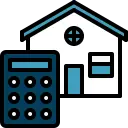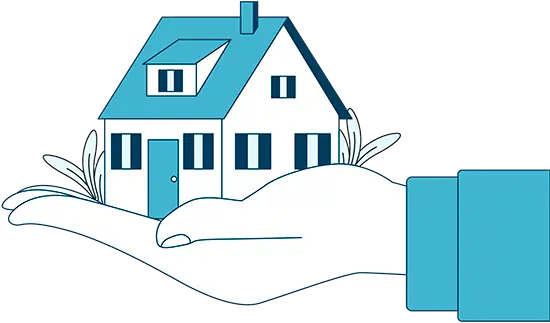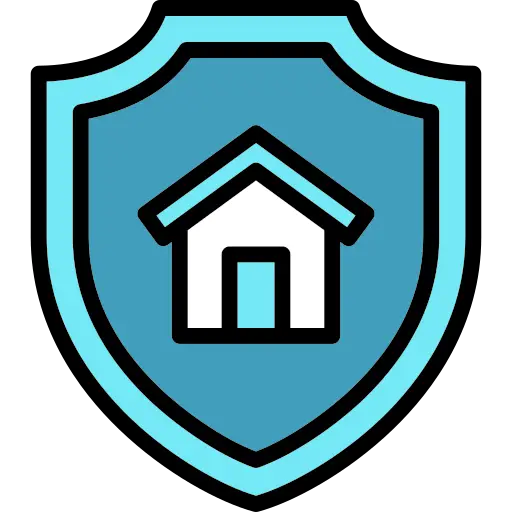Comparing homeowners insurance coverage options can easily become a headache. There are categories for different types of coverage, so you need to know which ones cover what occurrences before you purchase. Each policy’s name begins with HO, which is short for HomeOwners insurance.
Types of Home Insurance Coverage
While most homeowners purchase HO-3 coverage, we’ll explain the options, so you know which plan provides the most coverage for your unique situation.
HO-1
A basic policy, HO-1 offers minimal coverage for both structures and property. It covers eleven basic areas:
- Fire/lightning
- Windstorms/hail
- Vandalism/malicious mischief
- Theft
- Damage from vehicles/aircraft
- Explosions
- Riots/civil commotion
- Broken glass
- Smoke
- Volcanic eruptions
- Personal liability
However, most states don’t offer this basic coverage anymore, due to the availability of more comprehensive options at a reasonable cost.
HO-2
An HO-2 policy is a broader type of coverage and covers the eleven components of HO-1 coverage plus more “named perils.” Your agreement will outline which perils it covers, but typically those are:
- Frozen household systems
- Burst or broken pipes
- Water or steam damage
- Electrical damage
- Falling objects
- Damage from the weight of snow or ice
Generally, your personal belongings and liability fall under the HO-2 umbrella. Still, since it’s a named peril policy, anything not included in the contract won’t be covered.
HO-3
The most common type of coverage homeowners choose, HO-3 is a special form that works for most single-family homes. While this plan doesn’t include all the possible “perils,” it names an extensive list and has “open risks.” Among the perils HO-3 covers on your home are:
- Power failures
- Nuclear hazards
- Water damage
- Government damage
- Fungus, rot, or mold
- Animal damage (even pets)
- Pollutant leakage
- Earthquakes or other natural disasters that produce movement
- Property collapse
You can also add endorsements to HO-3 for additional coverage if necessary.

HO-4
This type of insurance is for renters and covers personal property the same as HO-2 or HO-3. It can also include liability coverage for personal injury and property damage. However, it does not cover the property, because the law requires the property owner to maintain an insurance policy for the structure.
HO-4 or renters insurance usually includes the cost of your living expenses if you must vacate a rental property while professionals repair the damage.
HO-5
Although HO-3 is the most common, HO-5 is the most comprehensive plan available for homeowners. It explicitly names what is not covered by the plan, therefore protecting your property and belongings against all types of hazards.
Also known as an “open perils” policy, the HO-5 does leave off dangers such as earthquakes and water damage. Still, you can add these endorsements for further protection if necessary. However, you cannot add an endorsement for flood insurance, meaning that you’ll need a separate policy for that purpose.
HO-6
HO-6 is for condominium owners, protecting an individual’s unit separately from its neighboring units. HO-6 policies cover the personal property of the homeowner plus the walls, floors, and ceiling of the condo. While homeowners can purchase this coverage, which includes all perils in the HO-2, the rest of the condo must have separate coverage through the homeowners’ association.
HO-7
If you own a mobile or manufactured home, you might be wondering what type of coverage your house needs. The HO-7 option extends coverage to mobile homes that don’t meet the requirements for typical homeowners insurance policies. However, the coverage is like that of an HO-3 for a stick-built home.
HO-8
For older homes that would cost more to repair than to rebuild entirely, the HO-8 is appropriate. This modified coverage form typically covers historical properties and registered landmarks, and it includes variations of HO-3 coverage depending on the features of the home.
Estimating How Much Coverage You Need
You know that you need homeowners insurance to protect your investment in your home. But how much coverage do you need? What happens if you need to submit a claim? Is the cheapest home insurance the best bet? Here we’ll explain how to determine what coverage you need to protect yourself and your home.
Calculate Replacement Costs
Homeowners insurance aims to repair or replace your home after a disaster strikes. Therefore, you need to come up with a figure that would sufficiently replace or restore your home to its current state. Hiring an expert can help with this, but don’t expect their appraisal to match your home’s exact market value.
In addition to the structure of your home, you should also assess your possessions. If your policy only covers the home, you will have the burden of replacing all your belongings after a disaster. Consider additional coverage for replacing both valuable belongings and everyday items.
Consider Liability
While most homeowners don’t expect that their friends will sue them in the event of an accident during a party or other event, it does happen.
Think about the fact that a court could find you responsible for injury or even death.
Also, even a criminal who receives an injury while trying to steal from you or damage property can still take you to court to pay damages. Liability insurance covers these types of incidents so that you don’t have to pay out of pocket.
Check the Geography
Again, if you live in a flood plain, now is the time to tack on flood insurance to your policy. Other circumstances may require additional insurance endorsements, so think about what your city or state’s weather patterns are like.
Also, consider the location and whether your area is prone to mudslides, fires, or any other natural disaster. Even if you live in a relatively safe area that doesn’t experience flooding or earthquakes, your property may have risks beyond what the typical policy covers.
Think about the location and position of your home’s lot and double check before purchasing a policy that doesn’t address those concerns. For example, you may want a specific type of coverage if you have:
- Water runoff near the home
- Potential for mold or fungus because of water presence
- Trees near or above the roof or windows
- Older outbuildings or other structures that may fall

Types of Coverage Levels
Like car insurance, homeowners insurance policies aren’t one-size-fits-all. Once you select the HO that fits your home and your life, you also need to decide what coverage level you want. Keep in mind that the level you choose can impact your overall costs, however.
Actual Cash Value
The cheapest insurance policy only covers what your property is worth today. It’s the cheapest policy because it accounts for depreciation of your home and possessions, making the payout amount lower. An ACV policy is what providers prefer because reimbursing you costs less than other options.
For example, if you own a flat screen TV that you purchased three years ago, the amount that an ACV policy would award you to replace it probably wouldn’t be enough to buy a brand-new one. Rather, you could theoretically afford a used TV that was around the same age as your old one. However, court decisions on the subject sometimes vary, so there is no hard and fast rule about what constitutes the actual cash value of an item.
Replacement Cost
Replacement cost means you can replace what sustains damage at market cost. While this type of coverage doesn’t quantify any one item, it has limits to the payout amount. With the television example, you would be able to purchase a new TV that is the same brand and size as the old one.
Replacement cost does not reflect the depreciation of the item, although limits do apply depending on your policy.
Guaranteed Replacement Cost
The most expensive level is guaranteed replacement, which doesn’t factor in depreciation and lets you replace items at the outer limits of the policy. However, you may face difficulty obtaining a policy, and you will likely pay more than you would on other coverage levels.
The benefit of this type of coverage is that even if your property sustains damage that costs more than your policy is worth, the company still replaces it. That means depreciation is not a factor, and you can replace all damaged items like new.
The Bottom Line
Finding cheap homeowners insurance isn’t always easy, especially if you live in a state with higher than average costs. However, it’s important to find the right coverage for both your property and budget, which is what we’re here to help with.
While the cheapest homeowners insurance is the most appealing, a high premium is sometimes necessary depending on your property and its risk factors. Rather than signing on with the first provider you come across, do your research and find the right fit for your home.

